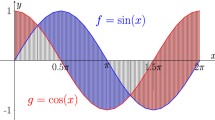Abstract
The projection problem (conceptual graph projection, homomorphism, injective morphism, θ-subsumption, OI-subsumption) is crucial to the efficiency of relational learning systems. How to manage this complexity has motivated numerous studies on learning biases, restricting the size and/or the number of hypotheses explored. The approach suggested in this paper advocates a projection operator based on the classical arc consistency algorithm used in constraint satisfaction problems. This projection method has the required properties : polynomiality, local validation, parallelization, structural interpretation. Using the arc consistency projection, we found a generalization operator between labeled graphs. Such an operator gives the structure of the classification space which is a concept lattice.
Preview
Unable to display preview. Download preview PDF.
Similar content being viewed by others
References
Sowa, J.F.: Conceptual structures: information processing in mind and machine. Addison-Wesley Longman Publishing Co., Inc., Boston, MA, USA (1984)
Baget, J.F., Mugnier, M.L.: Extension of simple conceptual graphs: the complexity of rules and constraints. Journal of Artificial Intelligence Research 16, 425–465 (2002)
Hell, P., Nesetril, J.: Graphs and homomorphism. In: Oxford Lecture Series in Mathematics and its Application, vol. 28, Oxford University Press, Oxford (2004)
Mugnier, M.L., Chein, M.: Polynomial algorithms for projection and matching. In: Pfeiffer, H.D., Nagle, T.E. (eds.) Conceptual Structures: Theory and Implementation. LNCS, vol. 754, pp. 239–251. Springer, Heidelberg (1993)
Croitoru, M., Compatangelo, E.: A combinatorial approach to conceptual graph projection checking. In: 24th Int’l Conf. of the British Computer Society’s Specialist Group on Art’l Intell, pp. 239–251. Springer, Heidelberg (2004)
Pfeiffer, H.: A comparison of different conceptual structures projection algorithms. In: ICCS 2007 (submitted, 2007)
Maloberti, J., Sebag, M.: Fast theta-subsumption with constraint satisfaction algorithms. Machine Learning 55, 137–174 (2004)
Zaki, M.: Efficiently mining frequent trees in a forest. In: 8th Intl. Conf. knowledge discovery and data mining, pp. 71–80 (2002)
Cook, D.J., Holder, L.B.: Substructure discovery using minimum description length and background knowledge. Journal of Artificial Intelligence Research 1, 231–255 (1994)
Liquiere, M., Sallantin, J.: Structural machine learning with galois lattice and graphs. In: Shavlik, J.W. (ed.) ICML, pp. 305–313. Morgan Kaufmann, San Francisco (1998)
Sebag, M., Rouveirol, C.: Resource-bounded relational reasoning: induction and deduction through stochastic matching. Machine Learning 38, 41–62 (2000)
Bessiere, C.: Constraint propagation. In: Rossi, F., van Beek, P., Walsh, T. (eds.) Handbook of Constraint Programming, Elsevier, Amsterdam (2006)
Ganter, B., Wille, R.: Formal Concept Analysis: Mathematical Foundations. Springer-Verlag, New York, Inc. Secaucus, NJ, USA, Translator-C. Franzke (1997)
Plotkin, G.: A note on inductive generalization. Machine Intelligence 5, 153–163 (1970)
Crole, R.: Categories for Types. Cambridge Mathematical Textbooks. Cambridge University Press, Cambridge (1993)
Weichsel, P.M.: The kronecker product of graphs. Proc. Am. Math. Soc. 13, 47–52 (1962)
Author information
Authors and Affiliations
Editor information
Rights and permissions
Copyright information
© 2007 Springer-Verlag Berlin Heidelberg
About this paper
Cite this paper
Liquiere, M. (2007). Arc Consistency Projection: A New Generalization Relation for Graphs. In: Priss, U., Polovina, S., Hill, R. (eds) Conceptual Structures: Knowledge Architectures for Smart Applications. ICCS 2007. Lecture Notes in Computer Science(), vol 4604. Springer, Berlin, Heidelberg. https://doi.org/10.1007/978-3-540-73681-3_25
Download citation
DOI: https://doi.org/10.1007/978-3-540-73681-3_25
Publisher Name: Springer, Berlin, Heidelberg
Print ISBN: 978-3-540-73680-6
Online ISBN: 978-3-540-73681-3
eBook Packages: Computer ScienceComputer Science (R0)




